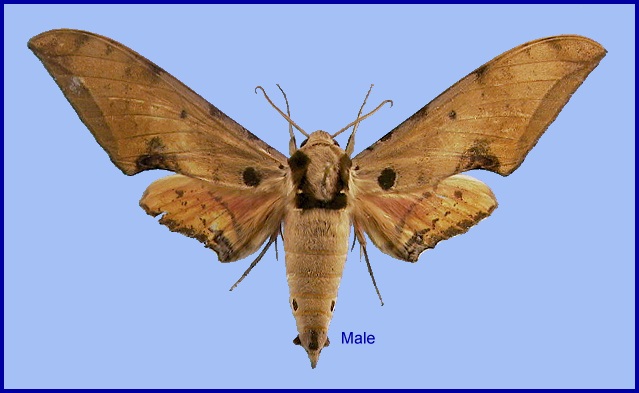
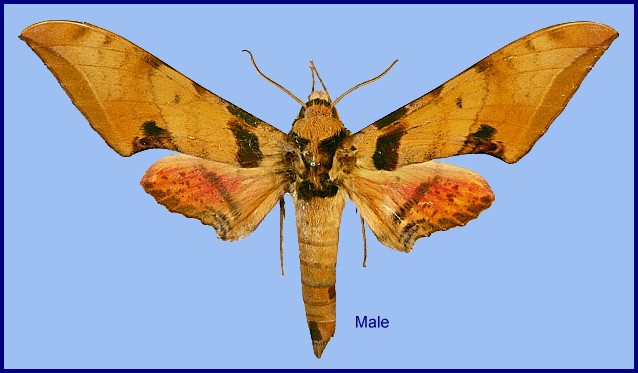
Oxyambulyx kuangtungensis Mell, 1922, Dt. ent. Z. 1922: 114. Type locality: China, northwest Kwangtung [Guangdong].
Synonym. Oxyambulyx kuangtungensis Mell, 1922.
Synonym. Oxyambulyx kuangtungensis formosana Clark, 1936.
Synonym. Oxyambulyx kuangtungensis hoenei Mell, 1937.
Synonym. Oxyambulyx kuangtungensis melli Gehlen, 1942.
Synonym. Oxyambulyx takasago Okano, 1964.
Synonym. Ambulyx adhemariusa Eitschberger, Bergmann & Hauenstein, 2006.
Note. The holotype and a paratype of Ambulyx adhemariusa fall within part of a tight DNA barcode cluster of 'typical' Ambulyx kuangtungensis from Fujian, Hubei, Shaanxi, Sichuan, Yunnan and Xizang/Tibet and should be considered, at best, a form. Furthermore, Ambulyx kuangtungensis 'form' adhemariusa is not restricted to the type locality but is quite widespread, though rare, throughout the range of the species, as several posted images can testify.
Kitching (6.i.2017) expands on this in the Sphingidae Taxonomic Inventory --- STI, saying "Synonymized with Ambulyx kuangtungensis by Brechlin & Haxaire, 2014, Entomo-Satsphingia 7(2): 47. Reinstated as a species by Eitschberger, 2016, Neue ent. Nachr. 70: 149. Eitschberger et al. (2006) differentiated Ambulyx adhemariusa from Ambulyx kuangtungensis primarily on the basis of a complete, or nearly complete, basal band on the forewing upperside. In comparison, the basal band in Ambulyx kuangtungensis, as in all other species of the genus except Ambulyx japonica, comprises at most two separate elements, a dark, semicircular mark on the costa and a circular or ovoid spot near the posterior margin (although either or both may be absent as part of normal intraspecific individual variation). They also noted that the male genitalia were very similar to those of Ambulyx kuangtungensis, although there were a 'great number of differences'. However, these differences were not described, but only noted to exist in sacculus, harpe, uncus, valve and phallus, and the reader was simply referred to the illustrations to determine these differences for themselves. The only difference explicitly described by Eitschberger et al. (2006) was that during preparation of the genitalia, the scales on the valve (most likely the stridulatory scale patch, though this is not clear) detached as a unit in Ambulyx adhemariusa, whereas in Ambulyx kuangtungensis and other species studied in that paper, they detached individually.
Brechlin & Haxaire (2014) later synonymized Ambulyx adhemariusa with Ambulyx kuangtungensis. They argued that the form of the basal band on the forewing upperside was not diagnostic as, contrary to the statement by Eitschberger et al. (2006), who only illustrated the holotype, it was not present in all 11 paratypes. However, they did not state how they had arrived at this conclusion. Other than that feature, Brechlin & Haxaire (2014) noted that no other diagnostic differences in the habitus had been presented or were evident. They also criticized the lack of explicitly described diagnostic features of the male genitalia by Eitschberger et al. (2006) and questioned the validity of the valve scale character. In the same paper, Brechlin & Haxaire (2014) then described a closely related new species, Ambulyx latifascia, which although it had a similar continuous basal band differed in other respects and detailed descriptions of these, for both the habitus and male genital structure, were given. Brechlin & Haxaire (2014) also justified their synonymy of Ambulyx adhemariusa and their description of Ambulyx latifascia as a new species on the basis of results from analysis of DNA barcode data. Unfortunately, they did not provide any details in support of this conclusion.
Eitschberger (2015) took great exception to both the synonymy and new species, referring indirectly to the paper by Brechlin & Haxaire (2014) as a 'published fairytale' in his English abstract. His first criticism was levelled at the claim by Brechlin & Haxaire (2014) that not all of the paratypes had the complete basal band, which he refuted by publishing images of all 12 specimens. In this regard, Eitschberger was correct, but rather than trying to determine the source of the error, he simply asked the snide question 'Wer kann diesen dans ins Ohr geflüstert haben' ['Who can have been whispering this in their ears?']. As it turns out, Brechlin & Haxaire (2014) had simply been misled by a record in the Barcoding of Life Database (BOLD) that had been mistakenly labelled as a paratype (BC-EMEM0865 from 'Ankang, Suburn' ['Ankang suburb'?]. In fact, this specimen was actually the Ambulyx kuangtungensis whose genitalia (GP4344) Eitschberger et al. (2006) had compared with those of a paratype of Ambulyx adhemariusa (GP4342). This error in BOLD was corrected on 6.x.2016. Eitschberger (2015) did not address the lack of explicit descriptions of diagnostic features, effectively saying that if the reader could not determine those differences by comparing the illustrations, then there was nothing more to be said. He then proceeded to reinstate Ambulyx adhemariusa to species status by assertion, and synonymized Ambulyx latifascia with it 'since the agreement is just too large, not only externally but in the genital morphology, there is no escaping their synonymy'. Just how the two taxa agreed in morphology was not explained and the DNA barcode data was just dismissed as irrelevant.
Overall, the arguments and conclusions put forward by Brechlin & Haxaire (2014) are considered here to be unrefuted and Ambulyx latifascia is treated as a good species. Furthermore, Ambulyx adhemariusa is placed back into synonymy with Ambulyx kuangtungensis as a form in which the costal and inner edge elements of the basal band of the forewing upperside have expanded to form an almost complete band. DNA barcode analysis supports these treatments. Not only do the two species fall into two different BINs (Ambulyx latifascia AAB6407; Ambulyx kuangtungensis AAB6406) but the holotype and a paratype of Ambulyx adhemariusa form part of a tight cluster with 'typical' Ambulyx kuangtungensis from Fujian, Hubei, Shaanxi, Sichuan, Yunnan and Xizang/Tibet (China). Furthermore, Ambulyx kuangtungensis f. adhemariusa is not restricted to the type locality but is quite widespread, though rare, throughout the range of the species, as several published images testify."
Wingspan: 65--80mm. Male very similar to Ambulyx ochracea but generally smaller. Forewing upperside subbasal and basal costal spots usually separate but can be enlarged and merged to form a transverse band that looks similar to that seen in Ambulyx latifascia (Brechlin & Haxaire, 2014); medial area with more scattered brown scales and a conspicuous curved and broken, brown postmedial line; subterminal line weak, greyish, its greenish-yellow edge obviously fading before reaching the tornus; when present, the blackish-green spot in the submarginal area between veins CuA1 and CuA2 generally smaller than in Ambulyx ochracea; marginal area brown; underside basal to medial area with scattered conspicuous pink scales. Hindwing upperside with conspicuous dark brown scattered scales, basal to medial area covered with pink scales (Jiang, Kitching, Xu, Xu, Yan, Yu, Liu & Hu, 2025).
Male genitalia similar to Ambulyx ochracea, with patch of friction scales on valve narrower. Sacculus broader; dorsal margin with an irregularly excavated concavity ending in a distal recurved hook; harpe broader, triangular, and somewhat downcurved. Phallus shorter and thicker than Ambulyx ochracea, sclerotized posterior lobe strongly curved and apically sharply pointed, with tiny teeth laterally (Jiang, Kitching, Xu, Xu, Yan, Yu, Liu & Hu, 2025).

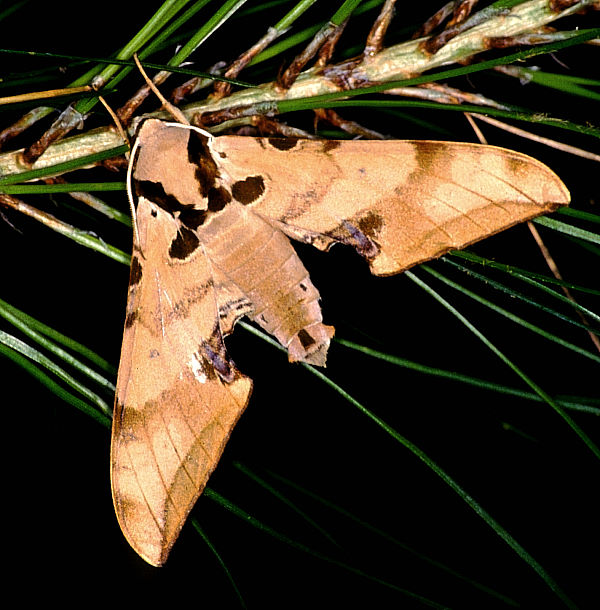
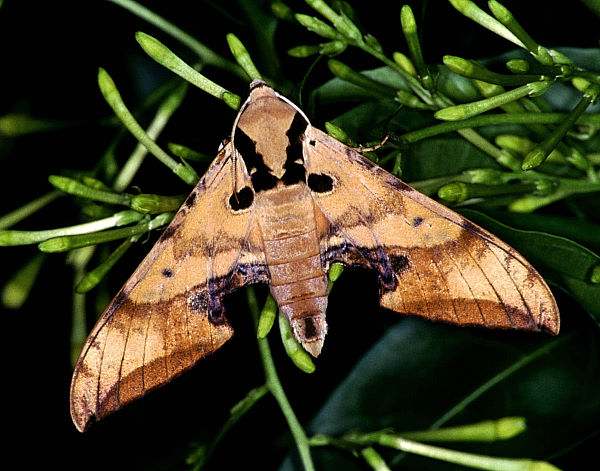
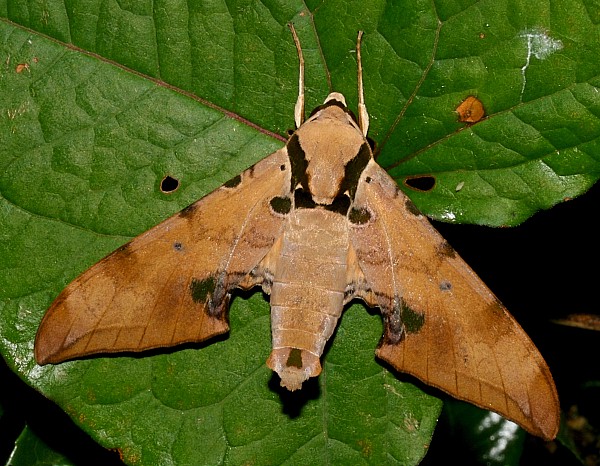
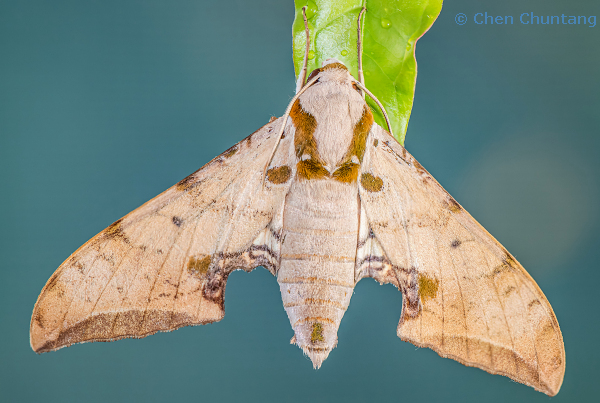
China: vi (Laojun Shan & Gaoligong Shan, Yunnan; Baihuashan, Beijing); vii (Luotian, Hubei; Henan; Shaanxi); viii (Guangze, Fujian); 20-23.ix (Baoshan, Yunnan); ix (Xunyang, Shaanxi); 15.ix (Xishuangbanna, Yunnan); 23.ix (Dali, Yunnan); 27.ix (Lijiang, Yunnan). Taiwan: iii-vi (Hualien Hsien); 28.vii (Hualien Hsien).
OVUM:
LARVA:

Photos: Larvae of Ambulyx species from China. (A) Ambulyx moorei, Foshan, Guangdong, China; (B) Ambulyx sericeipennis sericeipennis, Hongkong, China; (C) Ambulyx ochracea, Guangzhou, Guangdong, China; (D) Ambulyx kuangtungensis, Guangzhou, Guangdong, China; (E) Ambulyx semiplacida montana, Pingbian County, Yunnan, China; (F) Ambulyx schauffelbergeri, Chongqing City, China; (G) Ambulyx siamensis, Mengla County, Yunnan, China; (H) Ambulyx siamensis, Mengla County, Yunnan, China; (I) Ambulyx liturata, Mt. Maoershan, Guangxi, China; (J) Ambulyx tobii, Kunming, Yunnan, China. (© Jiang, Kitching, Xu, Xu, Yan, Yu, Liu & Hu, 2025)
PUPA:
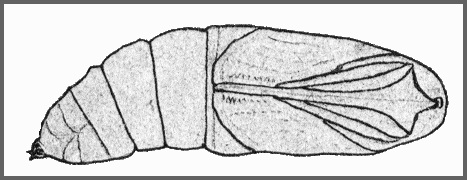
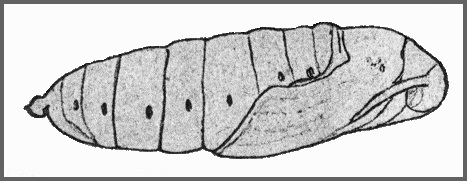
Larval hostplants. Recorded in Guangdong on Choerospondias axillaris (as Poupartia fordii) (Anacardiaceae) (Mell, 1922b), and from Yunnan on Elaeocarpus rugosus. A record on Aceraceae (Chang, 1989) may be an erroneous transferred record from another Ambulyx species and requires confirmation.
In Taiwan, recorded only from Pistacia chinensis (Anacardiaceae).
Unknown.
China: Beijing (Baihuashan, 1410m); Hebei; Shaanxi (Xunyang, 1380m; Huayangzhen, nr Hanzhong); Gansu; Henan (Luoyang, 1763m); Jiangsu (Baohuashan National Forest Park, Zhenjiang; Kongshan, Nanjing, 341m); Anhui (Yuexi); Zhejiang (Kuocang Mountain Nature Reserve; Tianmu Shan, 920m; Linshan, 134m); Hubei (Luotian, 1729m; Yingshan County); Sichuan; Chongqing (Yintiaoling Nature Reserve, Wuxi County, 1270m); Yunnan (Lijiang, 2700m; Mengla County, 847m; Laojun Shan, 2579m; Baoshan, 1000-1500m; Gaoligong Shan; Dali; Hanjichong, Yuanjiang County, 810m); Xizang/Tibet; Guizhou (Jiucai Ling; Xinzhaidashan, Zhijin County, 1000-2000m; Maolan Nature Reserve, Libo, 896m); Hunan; Jiangxi; Fujian (Guangze, 1200m); Guangdong (Meixian; Nanling National Forest Park; Guangzhou); Guangxi; Hainan (Duowen Ling, nr Lingao; Jianfengling, 1012m).
Taiwan: Hualien Hsien (Taroko National Park; Tianxiang; Antung; Hungyeh); Nantou Hsien (Puli; Lushan Spa); Taichung Hsien (Devlan Trail (Guguan), 645m; Kukuan).
Besides southern China, it is also found in northern Burma/Myanmar (Banmauk, Sagaing Province), northern Thailand, northern Laos, northern Vietnam and Taiwan.

Map: Distribution of species of the Ambulyx schauffelbergeri- and Ambulyx kuangtungensis-groups: Ambulyx latifascia (black triangles); Ambulyx kuangtungensis (blue dotted line); Ambulyx schauffelbergeri (red dotted line); Ambulyx sericeipennis sericeipennis (green dotted line); Ambulyx sericeipennis joiceyi (purple triangles); Ambulyx sericeipennis javanica (orange triangles); Ambulyx sericeipennis luzoni (green triangles); Ambulyx sericeipennis palawanica (red triangles); and Ambulyx tobii (yellow patch). (© Jiang, Kitching, Xu, Xu, Yan, Yu, Liu & Hu, 2025).
Holarctic; eastern Palaearctic region. Pleistocene refuge: Monocentric -- Yunnan refugium.
 Return to Sphingidae of the Eastern Palaearctic species list
Return to Sphingidae of the Eastern Palaearctic species list